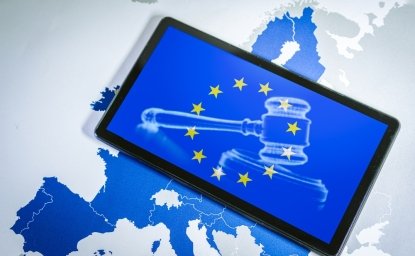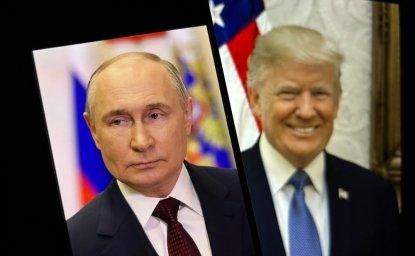281. The East-West Divide in Europe: Does it Exist?

Elemer Hankiss is the Research Director of the Institute of Political Science at the Hungarian Academy of Sciences. He spoke at an EES noon discussion on October 22, 2003, while in residence at the Wilson Center as a Public Policy Fellow. The following is an edited version of Professor Hankiss's presentation. Meeting Report 281.
The shortest answer to the question posed by the title is, yes, it does. But this answer is only partially true. A truer answer, but still only partially true, is that it does and does not. And the real answer is, I think, that it does exist but is only one among the many dividing lines that criss-cross Europe and it may not be the most important one—or at least its importance is rapidly decreasing. I emphasize this point because the reality or myth of the East-West divide has become part of the political game in Europe. It has become an argument against integration on both sides of the continent. Conservatives in the West repeat: "they are so different," while conservatives in the East echo: "we are so different
The East-West divide
Let me first clearly state that I am addressing the East-West Divide, not in Europe as a whole, but only within the EU and the countries that are due to accede early next year. The EU gives credence to the short answer, that yes, there are undoubtedly fields in which there will be significant differences between the western and eastern halves of Europe even after enlargement. Let me mention some of these fields in order of importance.
The greatest gap between East and West exists in the socio-economic sphere. East Central European countries are plagued by the lack of a social contract, by unacceptably high social inequalities, low social security, strong social disintegration, rampant, egotistic individualism and extensive destitution and poverty. There has been very little progress in addressing these problems since the chaotic early 1990s.
There still is a yawning gulf between East and West in the field of environmental pollution as well. In recent years, environmental rehabilitation has gathered momentum in the EU candidate countries, and the environmentalist mentality has been strengthened. But the problems to be solved are still intimidatingly great
As far as economic efficiency and production are concerned, candidate countries have made remarkable progress in the past 14 years, but experts and statistics are still inconclusive about how far these efforts have narrowed the gap between western and eastern economies. The differences in GDP per capita, productivity, economic output, capitalization, savings, integration into European and global networks, business skills and routines are still huge.
Much remains to be done in the field of political culture. People the East are still characterized as having less personal autonomy, less responsibility as citizens and members of a global community, and they are more passive politically than their counterparts in the West. In some of these countries people struggle with seriously disturbed national and social identities.
As far as political institutions are concerned, differences have almost disappeared between East and West. All candidate countries are now more or less well-functioning parliamentary democracies. It is true, though, that East Europe must still do a lot in terms of accountability, transparency, checks and balances, the rule of law and access to power and information—though some of the western countries are hardly models to emulate.
The real success has been achieved by candidate countries in adopting an institutionalized system to support a market economy. In this field they have gone through a fundamental learning and reform process, with some countries not that far behind certain West European countries. Finally, there are no significant differences in culture or lifestyle. In certain fields (literacy, education, the importance of literature and art), some of the eastern countries may score higher than certain countries in the West.
Complex patterns: historical
Historically, the East-West divide in Europe was not so clear-cut, stable or simple as it appears at present. There were many cross-cutting influences that have divided Europe for centuries and which do not—or only partially—overlap with the present East-West divide. In other words, Europe and European civilization is the product of three millennia of economic, political, social, cultural, climatologic and other changes, which have left their imprints on various parts of the continent.
Christianity, for instance, first spread over parts of the Balkans, and—in a different version—on the Italian peninsula and in faraway Ireland. Then it started to invade the Western part of Europe, could not conquer parts of Islamic Iberia for centuries, reached the great plains of East Central Europe in the tenth and eleventh centuries, and left untouched parts of northern and eastern Europe for a while longer.
Feudalism, in its fullest form, developed and flourished in the western and central part of Europe, it developed different and weaker structures in the Mediterranean basin, in East Central Europe, and hardly touched the northern belt of the continent. Urbanization had a dominant impact first in the Mediterranean. It reached the coastlines of the Atlantic Ocean, the North and Baltic seas and the shores of a couple of great European rivers a millennium later. It emerged as a string of splendid royal and princely cities and rich burgher cities in East Central Europe at about the same time, leaving large parts of Europe rural for several more centuries. Beginning in Italy, the Renaissance (and later the Baroque) conquered the western and central part of Europe, reached Austria, Dalmatia, Croatia, Hungary and Poland but did not penetrate large parts of northern and eastern Europe or the Balkans.
The reformation left its fundamental imprint on western, northern and parts of central Europe but did not even touch the Mediterranean basin and could not spill over the Carpathian Mountains or reach the East European plains. The enlightenment radiated out of Paris and London, reached communities as far north as Königsberg or St. Petersburg, but could hardly penetrate Italy or Spain and—except for some shining islands of enlightened reason at universities and in cities—left the center of Europe dominated by the Hapsburg empire, and Eastern and South Eastern Europe more or less in darkness. But the capital of this ‘dark empire' was, at the same time, one of the most important centers of the highest achievements of music. Later, countries lagging behind in the process of industrialization and modernization, such as Poland and Russia, rose among the most important centers of the Romantic revolution and Modern vanguard art.
The great waves of industrialization, modernization and democratization rolled from western and central Europe towards the southern, northern and eastern parts of the continent but as far as democracy is concerned, the western, central and southern regions of Europe lagged behind the democratic institutions of England or the everyday, grassroots democracy of some of the Scandinavian countries. The same is true of the social welfare institutions of the latter countries, and of late nineteenth century Germany.
The impact of negative, destructive factors was also uneven in the course of European history. The Hundred Years war, the great epidemics and the Thirty Years War destroyed some of the most developed western and central parts of Europe and caused less damage in other areas of central and southern Europe. Development was slowed down, even halted, for centuries by Islamic rule in Spain and by the Mongol invasions and the Turkish and the Russian occupations in eastern and southeastern Europe.
Imperial power and ‘grandeur' shaped the mentality of people in Spain, Portugal, Britain, France, the Netherlands, Sweden and Soviet Russia, while imperial domination crippled countries and people in the Hapsburg, the Ottoman and the Russian empires. All in all, we may state that looking at Europe from a historical perspective, we see a mosaic-like pattern and a maze of criss-crossing dividing lines instead of the simple East-West divide about which we have spoken thus far. And this continues to be true of contemporary Europe.
Complex patterns: now
Europe has a rich texture of social, political, economic and cultural entities. The dividing lines criss-cross all over the continent. Let me mention a few of these entities that overlap with one another in a complex pattern:
-‘Old' and ‘new' EU member states
-The Euro-zone and the rest
-The core EU countries and the rest
-The London—Madrid—Poland triangle
-The Mediterranean countries
-Big and small countries
-Rich and poor countries
-The "federalists" and the "confederationists"
-NATO members and non-members
-Spheres of influence (German, French, British, Italian, Spanish)
-Common interests (agriculture, etc.)
-Regional interests
-Catholic, Protestant, and mixed countries
-Countries with high or low (Islamic) immigrant populations
-Ad hoc alliances
Cohesive forces
Yes, for a certain period of time, there will be important differences between the western and eastern parts of the enlarged Union. But the forces of cohesion will, in all likelihood, be much stronger. Let me mention a few. We have common (or parallel) pasts, common memories, common victories and defeats, cooperation and conflicts. And beyond this, we could say, with Heidegger or Baudrillard, that our worlds (our economic and political models, technologies, ways of life, life strategies, music, sports, our visible worlds, images, myths, gods, symbols) speak the same language. We live in the same world of objects (cars, refrigerators, detergents, television sets, etc.) and in the same everyday civilization (hygiene, shopping, forms of civility, schools, etc.).
Europe also shares common problems, which the EU will have to solve in the coming years and decades. The only chance for people in the eastern and western parts of the Union to solve these problems will be by working together on their solutions. These problems include social and political problems, such as increasing the economic efficiency of the welfare state and social justice. Political problems are also critical, such as balancing freedom and equality, and finding an optimal combination of the various models of democracy (parliamentary and presidential, majoritarian and pluralist, indirect and direct, liberal and republican, modern and postmodern or interactive, etc.). Europe also faces the challenge of becoming one of the major centers of the world in terms of radiating new ideas, protecting human values, making new discoveries, developing new technologies and launching new movements.
Another range of problems that the EU will have to face involves making choices about what the EU ought to become. For instance, from the institutional perspective, should the EU be an alliance of nation states, a confederation of regions, a federation or a European united states? Another choice that the EU will need to make involves its role internationally. The EU will have to choose between whether it wants to become a leading power in the world or if it wants to accept the role of an ally or client of the US. Perhaps the EU should become a genuinely ‘soft' power, in which it acts as an intermediary in international conflicts, supports international institutions, and supports development and humanitarian aid programs. The EU might try to become a model for the world as a successful welfare state, a post-national political entity or a post-military great power. Or perhaps it should resign itself to being a post-historical playground, to be visited by American, Chinese and Kazakh tourists!
Indeed, there are many global problems that the EU can and should help to address, particularly in terms of creating a world safe from disorder, uncertainty, terror and conflict. How can the EU contribute to a world where there is less misery, more justice and more opportunities for poorer countries? How can it help create and protect open societies, freedom and other western values without oppressing other people or retreating behind the walls of fortress Europe? These problems are not exclusive to Europe, but must rely on the cooperation of countries around the world if we are to have any hope of solving them.
Clash of civilizations?
Those who use the concept of the East-West divide in their rhetoric and political strategies, are inclined to speak of a clash of two incompatible civilizations. I think that they are hopelessly wrong. Or more precisely, they are right when they speak of a clash of civilizations. But they are wrong when they think that this clash is taking place between the two parts of Europe. No, this conflict takes place within Europe, at the very heart of European civilization. It is the dramatic clash of traditional western civilization and our contemporary consumer civilization, which has triumphantly emerged in the last half a century or so.
Our basic views about the world and the role of human beings in it, our goals and strategies, our fundamental norms of conduct have radically changed. To show the extent and extreme character of this change let me juxtapose a few norms of conduct: in the left column there are the traditional principles, according to which our grandparents tried to live, and in the right column those which we are prompted to follow in the contemporary world. (See inset.)
Traditional Principles: New Principles:
Love thy neighbor! Love yourself!
Sacrifice yourself! Actualize yourself!
Discipline yourself! Enjoy yourself!
You are guilty, repent! You are innocent!
Save, be thrifty! Consume!
Live with scarcity! Live with abundance!
Obey! Conform! Be autonomous!
Be modest! Be free!
Punish yourself! Spoil yourself!
Do your duty! Fight for your rights!
Be careful! Take a risk!
This may be a deeper divide and may become a source of more conflict than the East-West divide to which politicians so often refer. And the situation is even more complex and chaotic since we live in the crossfire of a number of contradictory value systems and visions of the world, such as religious-based values, modern individualism, secular humanism, Victorian conservatism, hedonistic consumerism, postmodern ambiguity and stoicism or the New Age type of transcendentalism and occultism. Well, of course, it is not the responsibility of the EU or its bureaucrats to deal with the problems of this great cultural, moral and spiritual transformation. But these are problems that people run into every day and in this respect there is no difference whatsoever between people living in the member countries or candidate countries of the European Union. And they can solve these problems only together.
Reinventing Europe
The candidate countries in East Central Europe—as well as the Balkans—need to reinvent themselves. They have to find something in which they can excel, they have to find their place in Europe and in the world. And, in a different way, this is also true of the EU. This will be a difficult and long process, but I think that working on the solution of common problems is the best way to overcome traditional differences and bridge traditional divides. Will we succeed? We certainly will if we listen to an old and wise saying: Nothing is easier than success. You must simply do, in the right time and in the right place, the right thing.
Author

Research Director, Institute of Political Science, Hungarian Academy of Sciences

Global Europe Program
The Global Europe Program is focused on Europe’s capabilities, and how it engages on critical global issues. We investigate European approaches to critical global issues. We examine Europe’s relations with Russia and Eurasia, China and the Indo-Pacific, the Middle East and Africa. Our initiatives include “Ukraine in Europe”—an examination of what it will take to make Ukraine’s European future a reality. But we also examine the role of NATO, the European Union and the OSCE, Europe’s energy security, transatlantic trade disputes, and challenges to democracy. The Global Europe Program’s staff, scholars-in-residence, and Global Fellows participate in seminars, policy study groups, and international conferences to provide analytical recommendations to policy makers and the media. Read more

Explore More
Browse Insights & Analysis
360° View of How Southeast Asia Can Attract More FDI in Chips and AI

The Growing Transatlantic “Big Tech” Rift Explained

Mapping Undersea Infrastructure Attacks in the Baltic Sea
